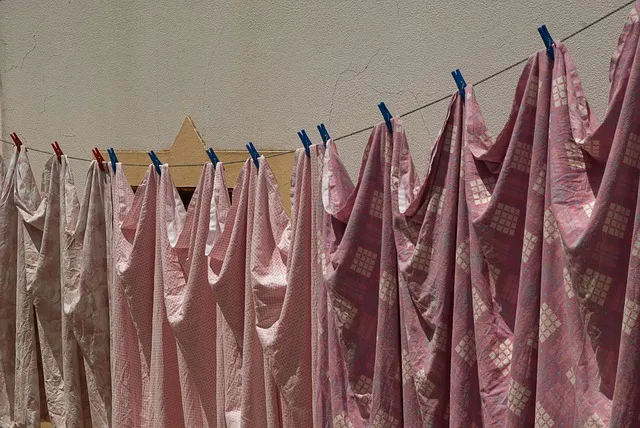What Are the Key Maintenance Tasks for Commercial Dryers?
First off, check the lint filters. They might seem like a small part of the equation, but a clogged filter can severely affect drying efficiency and even pose a fire hazard. Think of it like a coffee filter – if it’s clogged, the coffee (or in this case, the air) can’t flow properly.
Next, inspect and clean the dryer vents. Just as you wouldn’t want your car’s exhaust system to be blocked, a dryer vent needs to be free of debris to prevent overheating and ensure efficient drying. Regularly removing lint and other obstructions from the vents can save you from costly repairs down the line.
Don’t forget to examine the drum rollers and belts. These parts endure a lot of stress, and worn-out rollers or belts can cause excessive noise or even break down your machine. It’s like a car’s tires – if they’re not in top shape, you’ll have a bumpy ride.
Lastly, keep an eye on the dryer’s heating element. If it’s not working properly, your dryer won’t be able to get hot enough to do its job. Regular checks and cleaning can prevent overheating and maintain optimal performance.
Maximize Efficiency: Essential Maintenance Tips for Commercial Dryers
First off, clean the lint filter after every load. Think of it as a mini-sieve that catches the bulk of lint and debris. If you neglect it, not only will your dryer’s efficiency plummet, but it could also become a fire hazard. It’s a small task with a big payoff, so make it a routine part of your drying process.
Next, tackle the venting system. Over time, vents can become clogged with lint, which restricts airflow and causes your dryer to work harder than it should. This is like trying to run a marathon with a backpack full of rocks—your dryer will struggle and waste energy. Periodically check and clean the venting system to keep things flowing smoothly.
Another crucial tip is to inspect and maintain the drum rollers and bearings. These components are essential for the smooth rotation of the drum. If they wear out or get clogged, your dryer will have to work harder, leading to potential breakdowns. A quick check and occasional lubrication can prevent these issues and ensure your dryer runs efficiently.
Don’t forget to keep an eye on the dryer’s belts and pulleys. These are like the gears in a clock—if they’re not functioning properly, the whole system can be thrown off balance. Regularly inspect them for signs of wear and replace them as needed to keep everything running on time.
Avoid Costly Repairs: Top 10 Maintenance Tasks for Commercial Dryers
First off, don’t underestimate the power of a clean lint filter. Just like you wouldn’t drive a car with a dirty air filter, your dryer needs its lint filter cleaned regularly to operate efficiently. A clogged filter can lead to overheating and potential fires—no one wants that!
Next up, check those dryer vents. If they’re blocked or kinked, you’re looking at longer drying times and, yes, increased fire risks. Think of the vent like a freeway for hot air; if it’s jammed, traffic slows down, and so does your dryer’s performance.
Don’t overlook the importance of inspecting the drum rollers. These tiny components bear the brunt of the drum’s weight. If they’re worn out or misaligned, you’ll start hearing unpleasant noises, and your dryer’s efficiency will take a hit.
Also, keep an eye on the drive belt. It’s the unsung hero that keeps everything turning smoothly. A frayed or broken belt means you might face a total breakdown, so regular checks are crucial.
Checking the heating element is another must. If it’s not functioning properly, your dryer will either overheat or underheat, which translates to uneven drying and extra energy costs. Think of it like a chef’s oven; if it’s not heating right, your food isn’t cooking properly.
Ensure that the thermostat is accurately regulating temperatures. An out-of-whack thermostat can cause your dryer to overheat or underheat, resulting in prolonged drying times and possible damage.
Finally, don’t forget to inspect the electrical connections. Loose or frayed wires can lead to electrical shorts or even fires. It’s like making sure your toaster isn’t about to spark up while you’re making breakfast.
By staying on top of these maintenance tasks, you’ll avoid costly repairs and keep your commercial dryers in tip-top shape.
Keep Your Business Running Smoothly: Must-Do Maintenance for Commercial Dryers
First off, think of lint buildup like a clog in a pipe. Over time, lint can accumulate and cause major issues. To prevent this, make it a habit to clean the lint trap after every use. And don’t stop there—regularly check and clean the dryer vent to ensure air flows freely. This simple step can prevent overheating and reduce fire risks, making it a crucial part of your maintenance routine.
Next, consider the dryer’s belts and rollers. These components are like the wheels on your car. If they start to wear out or become misaligned, they can cause operational hiccups. Periodically inspect them for signs of wear and tear, and replace any parts that seem off-kilter.

Lastly, let’s not forget about the dryer’s drum. Just as you’d check the engine oil in your vehicle, you should periodically inspect the drum for any unusual noises or issues. Lubricate moving parts as needed to ensure a smooth operation.
Regularly reviewing these maintenance steps will help keep your commercial dryers in prime condition. After all, a well-oiled machine leads to a smoother-running business, keeping your operations humming along effortlessly.
Dryer Downtime? Not Anymore: Key Maintenance Strategies for Commercial Models
First off, regularly clean the lint filters. It’s like giving your car a quick wash to remove grime that could affect its performance. Clogged filters can reduce airflow, causing the dryer to overheat and potentially leading to costly repairs. Make this a part of your daily routine.
Next, don’t overlook the importance of inspecting and cleaning the dryer vents. Over time, lint and debris can build up in the venting system, much like how a clogged exhaust pipe can hinder a car’s efficiency. Blocked vents can cause the dryer to overheat and may even pose a fire risk. A professional cleaning every six months can help maintain proper airflow and efficiency.
Also, check the dryer drum and belt regularly. If you notice unusual noises or if the drum is not turning smoothly, it’s time to delve into a more detailed inspection. Worn-out belts or misaligned drums can lead to mechanical failures, much like how worn-out tires can affect a car’s handling.

Lastly, ensure that the dryer’s electrical connections are secure and free from damage. Just as you wouldn’t drive a car with faulty wiring, don’t run your dryer with loose or frayed electrical components. Regular checks can prevent unexpected shutdowns and extend the lifespan of your equipment.

